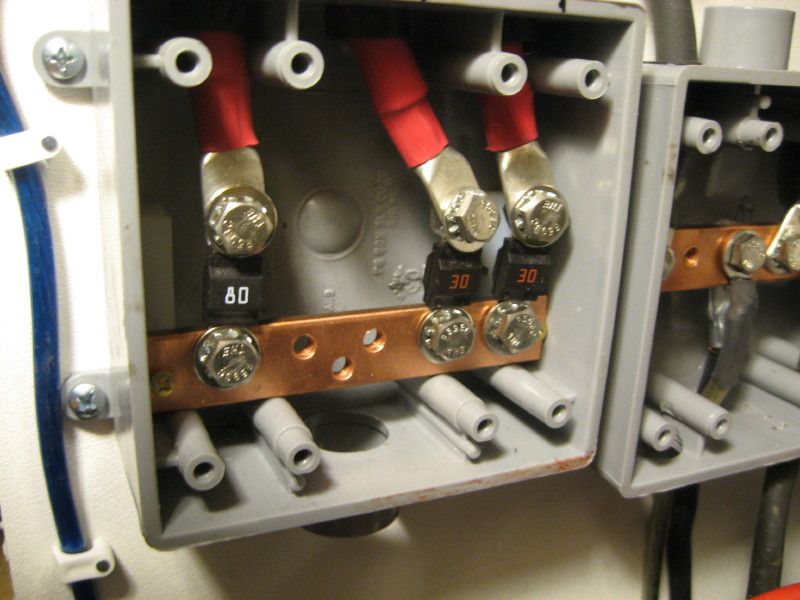SFGiantsfan925
Apr 21, 2015Explorer
New to us TT with Solar system. Lots of ????'s
We just bought a used TT from a very nice guy on Craigslist. It’s a 2006 Fleetwood Mallard 23’. The previous owner had installed a solar system on the roof. He said it is 2- 80w panels, making a 160w system. In the paperwork we were given with the trailer, it looks like it was a kit bought from Amazon in 2011 using Sharp brand panels.
It looks like the wires have been run down the fridge vent to the solar controller that was installed right above the fridge. The controller is a “SunForce” brand, which says it’s a 12v 30A Digital Solar Charge Controller. It has only 2 switches. One to change the type of battery between AGM or Lead acid, the other switch changes the display from showing Amps or Volts.
So, I am totally new to solar and have never owned a TT or RV. So this is all very new. I have been reading a LOT about solar and how the systems work. It seems clear as mud haha.
After talking to him, he said he had installed the system, and when it was installed the wires from the system were tied into the 12v system on the back of the fridge. He opened the exterior panel to access the rear of the fridge and showed where it is connected. It is NOT connected directly to the battery at all.
So this created a bunch of questions in my mind. Here they are:
1. Is it normal to wire solar into the 12v system, and not directly to a battery?
2. Will this still charge my batteries?
3. Do I leave my batteries connected to this system while the TT is in storage?
4. Are there any flaws with wiring it this way and not directly to a battery?
5. Should I leave my batteries hooked up at ALL while in storage? I’m thinking yes, so that the solar will keep them “topped off”. Batteries are 2- 6V GC2 wired for 12v.
I appreciate any and all the help I can get to understand this system. I called the previous owner and he explained the system as best he could, but I still had questions. Thanks!!
It looks like the wires have been run down the fridge vent to the solar controller that was installed right above the fridge. The controller is a “SunForce” brand, which says it’s a 12v 30A Digital Solar Charge Controller. It has only 2 switches. One to change the type of battery between AGM or Lead acid, the other switch changes the display from showing Amps or Volts.
So, I am totally new to solar and have never owned a TT or RV. So this is all very new. I have been reading a LOT about solar and how the systems work. It seems clear as mud haha.
After talking to him, he said he had installed the system, and when it was installed the wires from the system were tied into the 12v system on the back of the fridge. He opened the exterior panel to access the rear of the fridge and showed where it is connected. It is NOT connected directly to the battery at all.
So this created a bunch of questions in my mind. Here they are:
1. Is it normal to wire solar into the 12v system, and not directly to a battery?
2. Will this still charge my batteries?
3. Do I leave my batteries connected to this system while the TT is in storage?
4. Are there any flaws with wiring it this way and not directly to a battery?
5. Should I leave my batteries hooked up at ALL while in storage? I’m thinking yes, so that the solar will keep them “topped off”. Batteries are 2- 6V GC2 wired for 12v.
I appreciate any and all the help I can get to understand this system. I called the previous owner and he explained the system as best he could, but I still had questions. Thanks!!
